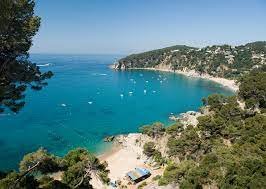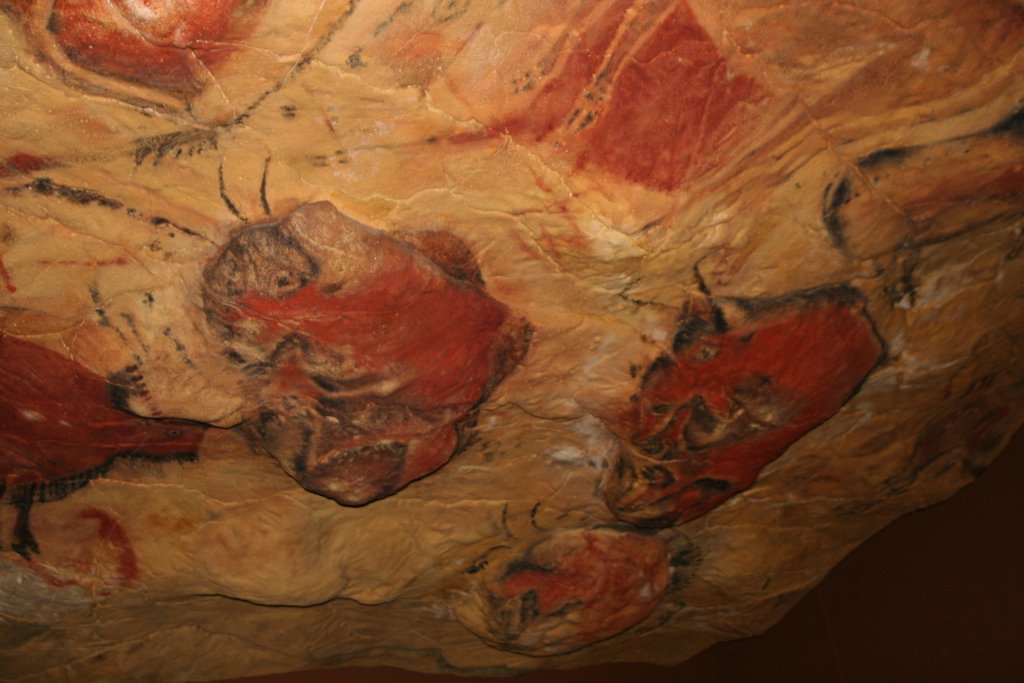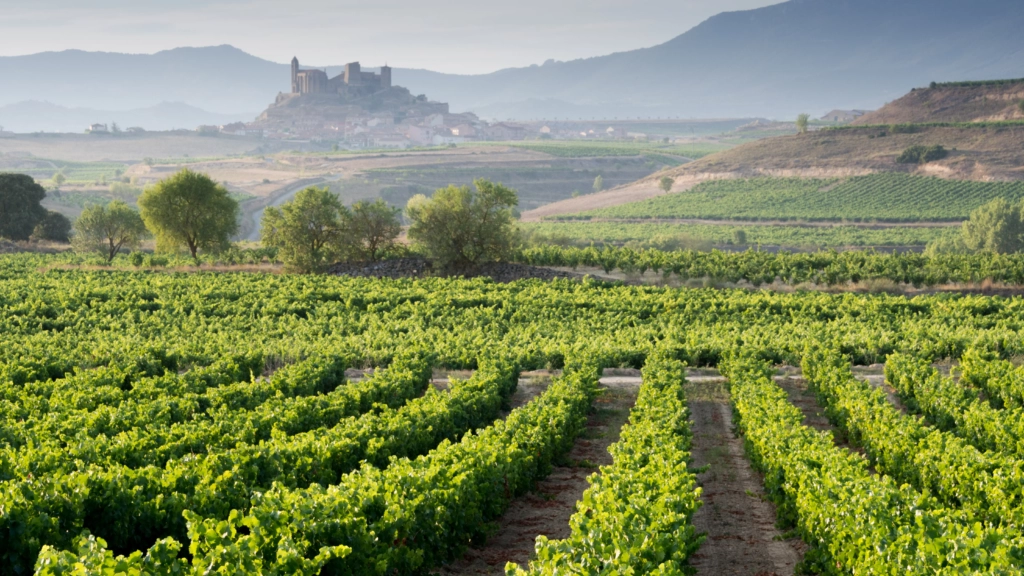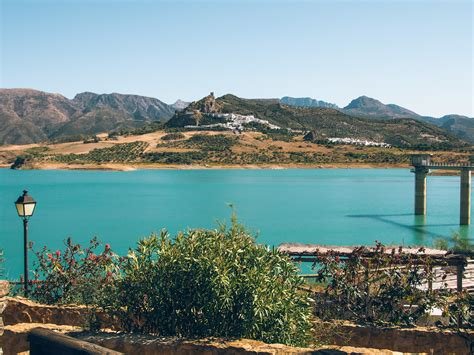Discover Spain’s secrets with hidden beaches, medieval villages, untouched caves, charming wine regions, secluded hiking trails, and authentic tapas bars.Bienvenidos, intrepid explorers and lovers of the path less traveled! Spain is renowned for its vibrant culture, delectable cuisine, and breathtaking landscapes—attributes that have magnetized travelers for centuries. Beyond the bustling streets of Madrid and the iconic beaches of Costa del Sol lies a treasure trove of undiscovered splendors. In our latest adventure, we’ll journey through the Iberian Peninsula, revealing ‘Top 10 Hidden Gems in Spain’ that promise to enchant even the most seasoned wanderer. We’ll unearth secluded beaches along the sun-kissed Costa Brava, wander through time in medieval villages nestled in the Pyrenean peaks, and echo in the unexplored caves of Cantabria. We’ll sip on exquisite vintages in charming wine regions that rival the famed Rioja and tread off-the-beaten-path hiking trails in the heart of Andalucia, culminating our escapade in the pulse of Catalonia, where secret tapas bars await in the shadowed alleys of Barcelona. Prepare for a journey that will reveal the lesser-known, but equally mesmerizing, facets of Spain.
Hidden Beaches along the Costa Brava

Discovering the hidden beaches along the Costa Brava is akin to uncovering precious jewels set amidst the rugged cliffs and turquoise waters of this breathtaking stretch of the Mediterranean coastline. Known for their secluded ambiance and pristine natural beauty, these beaches offer a tranquil escape from the bustling tourist spots. Intrepid travelers willing to meander down the less-trodden paths will be rewarded with the serene symphony of waves caressing the sun-kissed sands and the whisper of coastal breezes through maritime pines.
Among these secret coves, Cala S’Alguer stands out as a picturesque enclave, where traditional fishermen’s huts paint a colorful tableau against the backdrop of crystal-clear seas. Accessible only by foot through meandering trails, the journey to this beach is a tantalizing prelude to the tranquility that awaits. With a canvas of azure skies and rugged coastlines, it is a haven for those seeking solace, far from the clamor of crowded shores.
But the allure of the Costa Brava’s coast is not limited to its visual splendor alone; the hidden beaches serve as gateways to vibrant underwater ecosystems. Snorkelers and divers often find themselves gliding through lush forests of posidonia oceanica, the Mediterranean’s vital underwater plant, witnessing the dance of colorful fish as they navigate the rocky seabed. Such an environment offers a rare blend of peaceful seclusion above and a flourishing aquatic life below.
For those who dream of lazy afternoons basking in the golden light of the setting sun, Platja Fonda is a jewel waiting to be uncovered. Here, the verdant foliage of the surrounding cliffs creates an intimate atmosphere, offering a sense of privacy and exclusivity. As the day wanes, visitors lounging on this secluded stretch of coastline might find themselves contemplating the timeless beauty of nature, undisturbed and at peace in one of the Mediterranean’s hidden corners.
Medieval Villages in the Pyrenees

Within the majestic Pyrenees, a range that forms a natural boundary between France and Spain, lie the remnants of history, echoed through time in the form of medieval villages. These settlements are a treasure trove of ancient architecture and cobblestoned charm, often overlooked in favor of more accessible tourist destinations. In the heart of these mountains, one can find the serene beauty of an era gone by, where each stone and path tells a story of the past.
The village of Ainsa, with its grand, imposing castle and arcaded square, is a shining example of the region’s historical grandeur, its roots reaching deep into the Middle Ages. Walking through its streets feels like stepping into a different century, where every alleyway may lead to a stunning, time-weathered church or an expansive vista over the surrounding, rugged landscape. The Ainsa Castle, in particular, presents a breathtaking vision of the might and strategic importance these villages once held.
Not far from Ainsa, the village of Alquézar reveals itself, nestled in the pre-Pyrenean mountain scenery, offering another dimension of the medieval experience within the Pyrenees. Here, the focus is not only on the architectural wonders, such as the Collegiate Church of Santa María la Mayor, but also on the village’s harmonious relationship with nature. The surrounding canyons and rivers of the Sierra de Guara Natural Park provide a stunning backdrop to the intricate human handiwork of the village.
Each of these enclaves within the Pyrenees carries a quiet dignity, a stoic reminder of the region’s vibrant history and culture. For travelers seeking to immerse themselves in the tales and legends of the Middle Ages, venturing off the beaten track to explore the medieval villages in the Pyrenees is an enchanting journey into a time that may be gone, but not forgotten. Whether it’s the imposing fortresses, the silent watchtowers, or the quaint, rustic charm of the villages, these gems offer an unparalleled glimpse into an often unexplored aspect of European heritage.
Unexplored Caves of Cantabria

The serene region of Cantabria holds within its verdant landscapes a labyrinth of unexplored caves, each with their own whispers of ancient histories and geological marvels. Venturing off the beaten path, spelunkers and curious travelers alike can discover subterranean wonders, where stalactites and stalagmites form natural cathedrals, canvassed in the artwork of prehistoric inhabitants.
Among these shadowy chambers and echoing grottos, the dance of water erosion has carved out pathways leading to vast, almost untouched caverns. The El Soplao cave is an example, renowned for its extraordinary formations of helictites—a rare spectacle that defies the usual downward growth patterns of cave features. It remains a geography beneath the earth that few eyes have witnessed, a true cavernous treasure trove awaiting the footsteps of intrepid explorers.
The plunge into these hidden cavities requires a considerate measure of respect and caution; not only for personal safety but also for the preservation of these environments. Striking a balance between exploration and conservation, Cantabria’s caves present an ongoing invitation to those wanting to tread lightly into the echoes of the deep. The caves serve not just as natural museums preserving the geological and prehistoric narrative but as a stark reminder of the earth’s underlying mysteries.
For those who accept the call of these subterranean adventures, the caves of Cantabria offer a chance to step outside the bounds of conventional tourism and into a realm that whispers of the earth’s untold stories. Each descent is an opportunity to connect with an ancient world, a visceral encounter with time itself, encapsulated within the stone of these magnificent and largely unexplored caves.
Charming Wine Regions beyond Rioja

While the fame of Rioja often overshadows Spain’s diverse viticultural landscape, those willing to venture beyond can discover the alluring tapestry of lesser-known wine regions woven throughout the country. Lovers of fine vintages and scenic vineyards, pack your bags, as we embark on a journey to some of the most charming wine regions that remain under the radar, yet brim with character and quality, each offering a distinct terroir and a treasure trove of oenological delights.
First on our list is the vibrant and verdant Rías Baixas in Galicia, renowned for its crisp and aromatic Albariño wines. This region is a tapestry of rolling vine-covered hills and a coastal climate that bestows a unique maritime influence upon the grapes. As the gentle sea breeze mingles with the lush greenery, it creates an idyllic setting for sipping fresh, mineral-laden whites that pair exquisitely with the local seafood. A visit here is as much about the wondrous marriage of wine and local cuisine as it is about the scenic beauty.
Heading inland, one cannot overlook the dynamic Ribera del Duero, a gem that proves the high plateau of central Spain is as capable of producing robust and elegant reds as any of its coastal counterparts. The extreme weather and high altitude sculpt Tempranillo grapes into bold, structured wines that passionately express their rugged origins. Famed for its full-bodied and complex offerings, this region provides an atmospheric contrast with its medieval castles and ancient vineyards, suggesting a history as deep and inviting as the wines themselves.
The journey through Spain’s viticultural variety would be incomplete without a foray into the magical realm of Priorat. Tucked away in Catalonia, this region is a hilly haven where llicorella soils infuse its wines with a signature minerality. Garnacha and Cariñena vines dig deep into this distinctive black slate, producing powerful and intense reds that have gained international acclaim. As you navigate through its terraced vineyards, the dedication of Priorat’s winemakers becomes evident, showcasing how commitment to the land can yield some of the most spellbinding wines imaginable.
Off-the-beaten-path Hiking Trails in Andalucia

Wanderers seeking solace away from the well-trodden paths will find an unspoken paradise in Andalucia’s off-the-beaten-path hiking trails. These hidden treks whisper tales of the land’s untamed beauty and the silent history that echoes through rustic terrains and verdant valleys. As you traverse these lesser-known routes, the true essence of Andalucia’s natural wonders begin to unfurl, inviting you into a world where every step is an intimate dance with nature.
The Sierras of Tejeda, Almijara and Alhama Natural Park offers decidedly unspoiled paths where the songs of birds fill the air and the aroma of wild herbs pleases the senses, crafting a hiking experience that feels deeply personal and raw. Ascend the challenging peaks, navigate through the labyrinth of forests and encounter rare flora and fauna that are evasive to the bustling tourist spots, affirming this park’s place as a hiker’s treasure trove awaiting to be discovered.
Further entwining mystery with adventure, the Green Gorge (Garganta Verde) in the Sierra de Grazalema resonates with the adventurous soul. Its steep walls create a natural cathedral of rock that stretches upwards to the sky, offering hikers not only a physically demanding challenge but also an unparalleled visual spectacle. Envision crystal-clear streams weaving through emerald foliage, and the rare sight of Griffon vultures wheeling overhead; these are the moments that solidify this trail’s spot in the annals of Andalucia’s best-kept secrets.
Amidst the foothills of the Sierra Nevada, the Sulayr Trail snakes its way through ancient landscapes, disclosing views that can only be described as poetic. This extensive network of footpaths is a shrine to tranquility and a canvas of natural artistry. Here, the whisperings of the past are as tangible as the rocky paths under your feet, where every ridge and river bears witness to a story of Andalucia that remains untold to those who follow only the beckon of guidebooks and tourist maps.
Secret Tapas Bars in Barcelona
Barcelona’s culinary scene is a mosaic of flavors and experiences, drawing in gastronomy aficionados eager to explore beyond the bustling Las Ramblas and the renowned Mercado de la Boqueria. Venture into the labyrinthine heart of Barri Gòtic or the vibrant thoroughfares of El Raval, where you’ll find hidden tapas bars steeped in authenticity and local charm. These culinary havens, often unmarked and known only through local whisperings, offer an intimate atmosphere that pairs perfectly with the rich tapestry of tastes served therein.
Delve into the essence of Catalan culture by indulging in the exquisite, yet unpretentious flavors at a secret tapas bar hidden behind a nondescript door in the historic neighborhood of El Born. Here, locals and in-the-know travelers savor meticulously prepared bites, such as patatas bravas with a twist, perfectly seasoned with local spices, and artfully plated montaditos that showcase the region’s fresh ingredients and bold flavors.
Further from the city center, in the quainter quarters of Gracia, treasure-like tapas bars await, providing an escape from the tourist trail. In these cozy establishments, each dish is a narrative of Catalonia’s diverse gastronomic heritage, from succulent seafood offerings to inventive vegetarian delights. Engage with the friendly bar proprietor, who is often the chef and storyteller, imparting insights into the provenance of each tapas dish and the meticulous care that goes into its preparation.
For the insatiable connoisseur of hidden gems, the quest for the ultimate tapas experience in Barcelona may lead to a blush-walled bodega, where locals gather to fervently debate over football and politics over plates of artisanal cheeses and hand-carved Iberian ham. These secret spots are a testament to Barcelona’s character—a city where the allure of clandestine culinary adventures is perpetually just around the cobbled corner, inviting the curious to uncover the true soul of Spanish tapas culture.
Frequently Asked Questions
What can visitors expect to discover in the hidden beaches along the Costa Brava?
Visitors to the Costa Brava’s hidden beaches can expect to find secluded coves, pristine azure waters, and untouched natural landscapes, offering a peaceful escape from the more crowded tourist hotspots.
Could you name a few medieval villages in the Pyrenees that are worth exploring?
Certainly! Some medieval villages that are true hidden gems in the Pyrenees include Aínsa, Sos del Rey Católico, and Alquezar. These villages boast well-preserved historical architecture, ancient fortifications, and enchanting cobblestone streets.
What makes the unexplored caves of Cantabria special compared to other caves in Spain?
The unexplored caves of Cantabria are special because they often contain prehistoric cave paintings and geological formations that are untouched by mass tourism, providing an authentic and educational experience for visitors interested in history and natural wonders.
Which wine regions would you recommend visiting beyond Rioja for an authentic Spanish wine experience?
Beyond Rioja, wine enthusiasts should consider visiting regions like Ribera del Duero, Priorat, and Rias Baixas. These areas offer unique grape varieties, exquisite wines, and the opportunity to explore charming vineyards and local wineries while enjoying picturesque rural settings.
Could you suggest some off-the-beaten-path hiking trails in Andalucia for nature lovers?
Nature lovers will find Andalucia’s Sierra Nevada National Park and the Grazalema Natural Park to have some remarkable off-the-beaten-path hiking trails. These trails reveal stunning landscapes, diverse flora and fauna, and glimpses of traditional rural life.
What distinguishes the secret tapas bars in Barcelona from the more well-known tapas joints?
The secret tapas bars in Barcelona offer a more authentic and intimate dining experience, often with family-run establishments that have been serving locals for generations. These spots are less commercial and allow visitors to enjoy traditional Catalan dishes and tapas that might not be found on the typical tourist trail.
Are there any particular experiences or foods that visitors should not miss when exploring the ‘Top 10 Hidden Gems in Spain’?
When exploring Spain’s hidden gems, visitors should not miss trying local delicacies such as fresh seafood on the Costa Brava, artisan cheeses in the Pyrenees, anchovies in Cantabria, unique wines in lesser-known regions, Iberian ham in Andalucia, and regional tapas in Barcelona. Additionally, engaging with local artisans and taking part in cultural traditions will enrich the travel experience.



